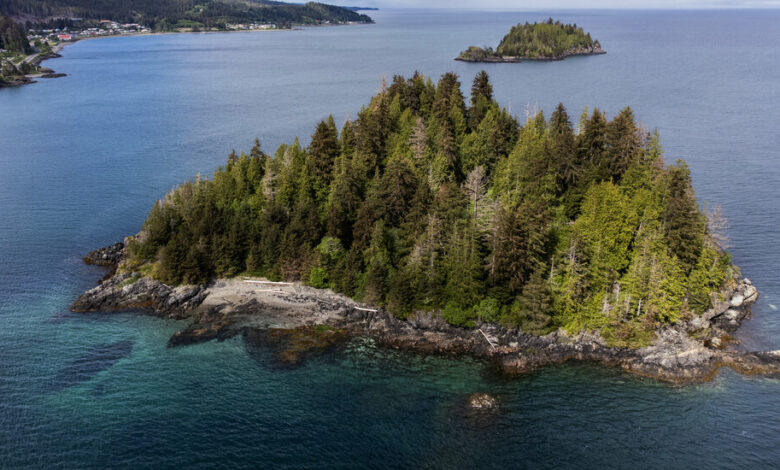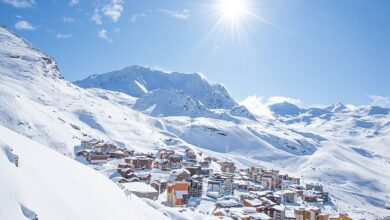A major power shift is taking place on small islands off the coast of Canada

The Raven, so the story goes, landed on the beach and heard sounds coming from a giant mussel shell. He found creatures huddled together, but like a trickster he lured them out. Freed, they became the first people of the islands of Haida Gwaii.
The Haida people have lived for thousands of years on Haida Gwaii, a remote archipelago in the Pacific Ocean off the west coast of Canada, just south of Alaska.
Nearly wiped out by smallpox after the arrival of Europeans, the Haida clung to their land. The land is so rich in wildlife that it is sometimes called the Galapagos Islands of Canada. Loggers love it for its ancient forests of giant cedars and firs.
For decades, despite their geographic isolation, the Haida’s unyielding struggle to regain control of their land has attracted unprecedented attention in Canada, raising questions about the country’s long, unacknowledged, brutal colonial history.
The Haida opposed clear-cutting and built relationships with environmentalists. They forged alliances with non-Haida communities in their own country and found common cause with other indigenous groups around the world.
In 2002, they filed a lawsuit against British Columbia to gain title to their land, buttressing their claims of centuries-old ties to the archipelago with a museum showcasing their art, artifacts, and founding myths, such as the story of the Raven.
Their methodical and meticulous search was rewarded in May when the government of British Columbia passed a law—the first of its kind in Canada—recognizing Haida aboriginal title throughout Haida Gwaii. No provincial or federal government in Canada had ever voluntarily recognized an Aboriginal people’s title to their land.
It is expected that in the coming years the provincial government will transfer authority over the land and resources to the Council of the Haida Nation, the government of the Haida people.
“We knew exactly what we wanted, who we were and why we were doing what we were doing,” said Frank Collison, 89, a hereditary chief who recalled dealing with unresponsive provincial and federal governments for decades. “They just weren’t interested in anything and were content to keep us down.”
British Columbia Premier David Eby said The recognition of the title meant that the province “moved from a place where the rights of the Haida Nation were denied to a place where they were recognized and upheld.”
Exactly how power will shift to the Haida remains to be negotiated with British Columbia, even as the province continues to provide services such as health care and maintain infrastructure such as highways.
According to some legal experts, the provincial law leaves a number of key issues unclear, including the impact of indigenous ownership rights over private lands owned by non-Haida people.
Others question whether the province can recognize native title — the inherent right of an indigenous group to land it occupied and used before colonization — without the federal government.
Haida leaders say they are optimistic they will reach an agreement with the federal government, which is also moving toward recognizing the indigenous people’s aboriginal titles.
Yet the development on Haida Gwaii, home to 5,000 people, evenly split between Haida and non-Haida, is seen as a turning point.
The indigenous community spoke about colonial liberation and reclaiming its natural resources.
Among non-Haida – referred to as “settlers” on the archipelago – many expressed support for the change, though some said they feared a future dominated by the Haida.
Court decisions over the years indicated that the Haida would eventually win their claim. So the British Columbia government, led by the left-wing New Democratic Party, decided instead to negotiate an agreement that led to the legislation.
“It showed a basic amount of respect, which was welcome,” said Jason Alsop, the chairman of the Council of the Haida Nation.
Mr Alsop spoke from the council headquarters overlooking Skidegate, a village on the archipelago’s main island where smallpox survivors gathered in the 19th century.
Taking advantage of a generally rich land and sea, the Haida had developed a prosperous society as traders, seafarers, artists, and owners of enslaved people from their wars with other indigenous groups. Haida Gwaii means Islands of the People in the Haida language.
Diseases brought by Europeans decimated their population. population from 20,000 to 600 by the end of the 19th century. In the 20th century, the Haida were further marginalized by Canadian government policies and large-scale logging.
In the 1970s, the Haida, along with some other indigenous groups in Canada, began to reassert themselves.
“We’ve started to get ourselves back in order,” said Nika Collison, executive director of the Haida Gwaii Museum in Skidegate.
Leaders established the Council of the Haida Nation, an elected body that spoke on behalf of the community in negotiations with provincial and federal governments. They built the museum, which strengthened their claim to Aboriginal title by not only showcasing their culture but also repatriating human remains and artifacts from museums around the world.
They revived traditional knowledge that had almost been lost. For the first time in 75 years, they built a canoe from a cedar tree, back-engineering the surviving examples, recalled Guujaawa former chairman of the council who calls himself Haida.
They also carved totem poles from cedars and erected them for the first time in decades. In Skidegate, they turned to a matriarch who, in a matrilineal society, was responsible for protecting cultural knowledge.
“She was the only one who could remember how to put up a totem pole,” says Diane Brown, 76, another matriarch who can recite the founding story in the Haida language.
Leaders presented their campaign as part of the global independence and environmental movements.
Guujaaw said that she strategies exchanged with indigenous groups in the Amazon, New Zealand, Australia, Chile and Myanmar.
Guujaaw also gained unlikely allies such as Dale Lore, a former mayor of Port Clements, a logging town north of Skidegate. It took 14 years for Mr. Lore to go from being a staunch defender of logging to an opponent and advocate of Haida autonomy, he said, explaining that Guujaaw had helped bring about the transformation.
“The Haida don’t try to win the battle all at once,” he said. “They take one bite at a time, swallow it, digest it, and go back for the next one.”
In 1995, Mr. Lore, who specialized in cutting logging roads through forests, came across lichen- and moss-covered canoes on the forest floor, carved from giant cedars but left behind by Haida who died of smallpox in the 19th century.
“It made me sick,” said Mr. Lore, pointing to one such canoe during a recent visit to the forest.
After becoming Mayor of Port Clements, Mr. Lore signed a protocol with the Council of the Haida Nation in 2004 recognizing both Haida property rights and private land in the village.
Still, not everyone was happy with the change in the balance of power.
Randy and Gloria O’Brien own one of the largest independent logging companies on Haida Gwaii, a company that also has a long-standing provincial contract to maintain the region’s highways.
Over the years, as Haida leaders and environmentalists have fought back against clear-cutting, the overall timber supply has declined and their business has suffered, the O’Briens said. They were forced three years ago, they said, to cut cedars from half of a 320-acre estate they planned to pass on to their children and grandchildren.
As power began to shift to the Haida, the O’Briens said elected officials became more indifferent to their grievances.
“They don’t return phone calls, and Victoria, we can’t even get in there to see anybody,” said Ms. O’Brien, 73, referring to the provincial capital. The couple said they feared for the future of their business after doing business on Haida Gwaii since the mid-1970s.
“When we first came here, we met a lot of the native people and they became our friends,” said Mr. O’Brien, 76. “We went partying with them, went fishing, went hunting, everything.”
“But now they’re suddenly —” he said, laughing. “They’re becoming our overlords.”
Mr Alsop, the council chairman, said the Haida wanted to move away from a “volume-based model” of logging.
Christian White, 62, a well-known Haida artist, said he had seen ships leave Haida Gwaii for years with loads of cedar logs, while the Haida themselves were restricted by forestry regulations from obtaining trees central to their culture.
In his studio, where one of his sculptures depicted people emerging from the shell on which the Raven sat, Mr. White said, “We are a people who share, but for too long the others have been getting more than their fair share.”




